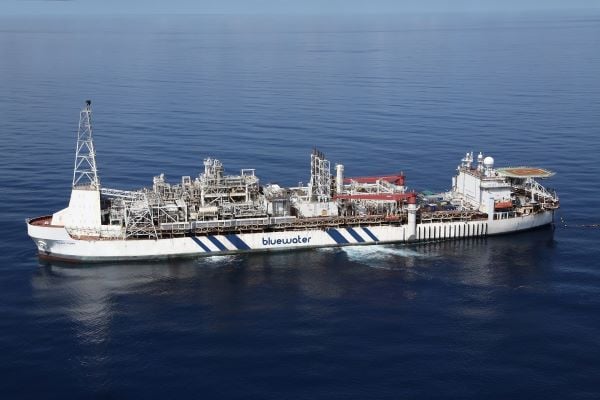Digitalisation, although hardly a new concept, has become a buzzword for the offshore sector over the past three or four years. Bluewater’s own digital voyage started in the late 1990s when the company, as a developer, owner and operator of floating production storage and offloading (FPSO) units, began digitally connecting design, vendor‑supplied and as-built documents with equipment tags. Initially, finding the information needed to operate, maintain and modify the fleet for field changes or relocation proved too time-consuming. However, the picture had changed a decade later with the emergence of new technologies that enabled physical scanning and links with maintenance logs. Health and Safety Executive and European directives also drove the connection of records and certificates for projects – greenfield and brownfield – which had to be maintained for the operating asset.
In the current era of the digital twin, Bluewater, like many other companies, is striving to connect its information sources dynamically to deliver a virtual (near-real life) image of an asset. This can be used to help maximise operational performance and improve execution of offshore asset modifications, mostly topside and marine‑systems oriented.
There are four main thrusts to the initiative. One is the use of 3D laser scanning to create new or revised Point Cloud models of the FPSO topsides process plant. These are converted to 3D CAD visualisation models that engineering teams can exploit for designing modifications to, for instance, piping systems or mechanical handling routes. Experience so far has been positive, with modifications consistently easier and quicker than under the previous regime of comparing photos and offshore measurements with 3D CAD design models. A second investment has been in the use of tablet computers outdoors to support construction and commissioning phases and during operations and maintenance.
Another development is the creation of a digital twin of the FPSO’s integrated control and safety system to enable remote monitoring from shore. Data taken from the array of sensors onboard the vessel undergo analysis: trends identified by data analysts and (over time) by Artificial Intelligence (AI) can lead to the adoption of proactive measures such as lengthened inspection and maintenance intervals.
More recently, the programme has expanded to include the hull structures and turret mooring system via the active connection of 3D Point Cloud data. Under a two-phase project, LR is developing a Structural Digital Twin (SDT) of the hull of Bluewater’s Glas Dowr FPSO, creating a detailed finite element (FE) model of the hull structure.
Since its first conversion in the mid-1990s from a newbuild oil tanker, Glas Dowr (pictured below) has been instrumented with a unique set of sensors that monitor the hull’s stresses and motions caused by waves and changing load conditions. These were used by the Monitas Joint Industry Project, supported by Bluewater and various oil majors, to develop an advanced hull monitoring system, including software that identifies and explains FPSO fatigue issues. After completing its initial, two-year assignment for Amerada Hess on the Durward/Dauntless fields in the UK central North Sea, the vessel underwent further topside modifications ahead of five years of harsh-environment service on Soekor’s Sable oil field in the South Atlantic, offshore South Africa. A third refit followed in Singapore in preparation for five years of production on Eni’s Kitan oilfield in the typhoon-prone Timor Sea.

The SDT model of Glas Dowr will help Bluewater assess the vessel’s redeployment options and operational readiness, taking into account the initial and subsequent redeployment upgrades and inspection data from the vessel’s operational history. LR will apply its proprietary Cloud-based technology to predict the vessel’s global and fatigue hull strength in various geographical settings, production conditions and development scenarios, all selected by Bluewater and drawing on Glas Dowr’s historical design, operational and measurement data. And by continuously compiling and processing sensor data, the SDT will present a constantly evolving picture of the FPSO’s health status. Understanding the remaining useful life for future scenarios would then determine the modification scope, if any is required, for the chosen field and design life.
Following the redeployment, the twin would continue to guide operational decisions in order to regularly evaluate the FPSO’s structural performance and to support maintenance and inspection in-service. As the SDT is built, maintained and trained using real-time data and evolves its predictions over time, it should reduce the volume of inspection and survey activities, helping Bluewater to focus attention on critical areas.
Physical inspections can be replaced down the line by remote technologies supplying data to the `twin’. By factoring inspections data into predictions, the SDT should attain a level of fidelity that provides assurance to surveyors on the levels of risk, reducing the need for a physical visual inspection onboard the vessel. Minimising the need for inspections would also lessen inspection costs and the risk of downtime.
Bluewater’s intention at present is to extend the co-operation with LR to Glas Dowr’s future operations offshore, and assuming the foreseen operational cost savings take effect, potentially to other assets in its fleet.
Today the company is connecting several platforms to its virtual asset image, from design to real-life sensor data and health diagnostics delivered by original equipment manufacturers and incident command systems. While data integrity is vital, digital twin investments can easily become excessive, in terms of time and expenditure, and Bluewater’s view is that not all the benefits are tangible. However, proactive, remote monitoring and data intelligence by data analysts or AI can deliver increased efficiency, uptime, lower operational costs and emissions, and the company has already seen the results in existing engineering, procurement and construction projects and during operations.
Since its first conversion, Glas Dowr has been instrumented with a set of sensors that monitor the hull’s stresses and motions caused by waves and changing load conditions.







